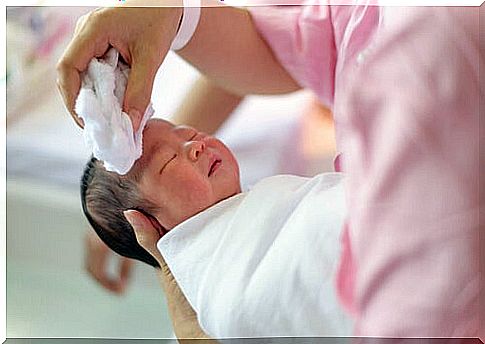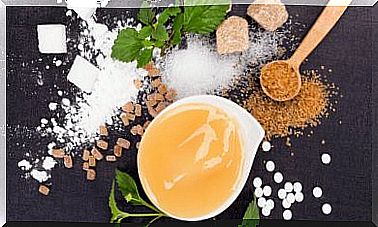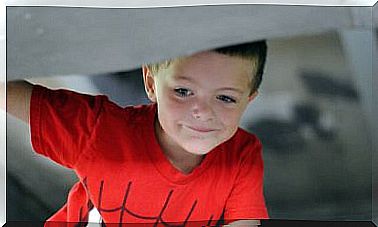Cradle Cap: What Is It And When To Treat It

Cradle cap is the colloquial name for seborrheic dermatitis that affects the baby’s scalp with whitish or yellow papules.
The moment of its appearance
Between the second or third week of life, crusts of dry fat may appear. It can be found in children as young as three years old. This type of seborrheic dermatitis affects 10 percent of newborns. Lesions appear on the head, eyebrows, between the eyebrows, behind the ears or in some folds of the body.
Cradle cap is related to genetic or meteorological factors. Also with hormonal disorders that drive the sebaceous glands to secrete excess fat. They are not serious or painful, but should not be torn off, to avoid skin injuries and the emergence of infections. They are neither contagious nor do they refer to poor hygiene.
Causes of cradle cap
Some babies react to the change of placental feeding for breast milk and its hormones, or artificial milk. High levels of fat generate excess stimulation of the sebaceous glands of the scalp and trigger cradle cap. Each child has his peculiarities.
Hormones that the mother passes to the fetus in late pregnancy can also be a likely cause. Another reason is related to the irritation caused by a fungus that grows in the sebum. What is a fact is that it has nothing to do with intolerance to milk or its intake.

When looking at other causes, there are also extreme climates, some immune system problems, stress, and certain skin conditions. It should be noted that all specialists agree that cradle cap is harmless, but not its causes, so it is necessary to be vigilant.
L atopic dermatitis, general skin irritation of the baby without apparent reason, more susceptible to these babies milk crust present.
The color and appearance vary depending on where the scab develops. It is white or yellow, greasy in appearance, if it is on the scalp. If it is on the face, it will have a reddish color, accompanied by yellowish scabs. With proper treatment, the healing of these papules occurs in a short time. It is convenient to bear in mind that babies can suffer it again when they are older.
A problem with a solution
In milder cases, there is no need to worry. The scab tends to disappear over the months, without treatment. If the decision of the parents is to remove it sooner, the option is to soften it until it falls off, with creams or baby body oil. They are applied to the head, with massages on the scabs, and the child is bathed half an hour later.
The baby’s head should be washed daily with suitable, pharmacy and non-cosmetic shampoo. You also have to comb it and apply the treatment indicated by the pediatrician, if any.

Another option is to use a wet sponge and shampoo. He rubs his head until some scabs pop out. The procedure is repeated every three days, always with the appropriate dose of delicacy. Do not forget that we are treating a baby’s skin, very fine and vulnerable.
Seborrheic dermatitis can spread to the forehead and eyebrows. Olive or almond oil will solve the problem, even if there is pus on the scabs.
Emollients can also be applied and massaged on the baby’s head. The oils can be left in overnight and then washed off with a non-drying shampoo. Combing it with a soft brush will help remove the baby’s scabs.
Signs of special caution
There are reasons for alert. If the scab is very large, or if it becomes yellowish and with reddened edges, the visit to the pediatrician should be early. Specialized help should also be sought if it bleeds or spreads outside the scalp.
The ointments with corticosteroids, antibiotics or fungicides, usually are a good solution. Cradle cap is a simple condition to correct, which does not pose health risks and is resolved as an aesthetic problem.









